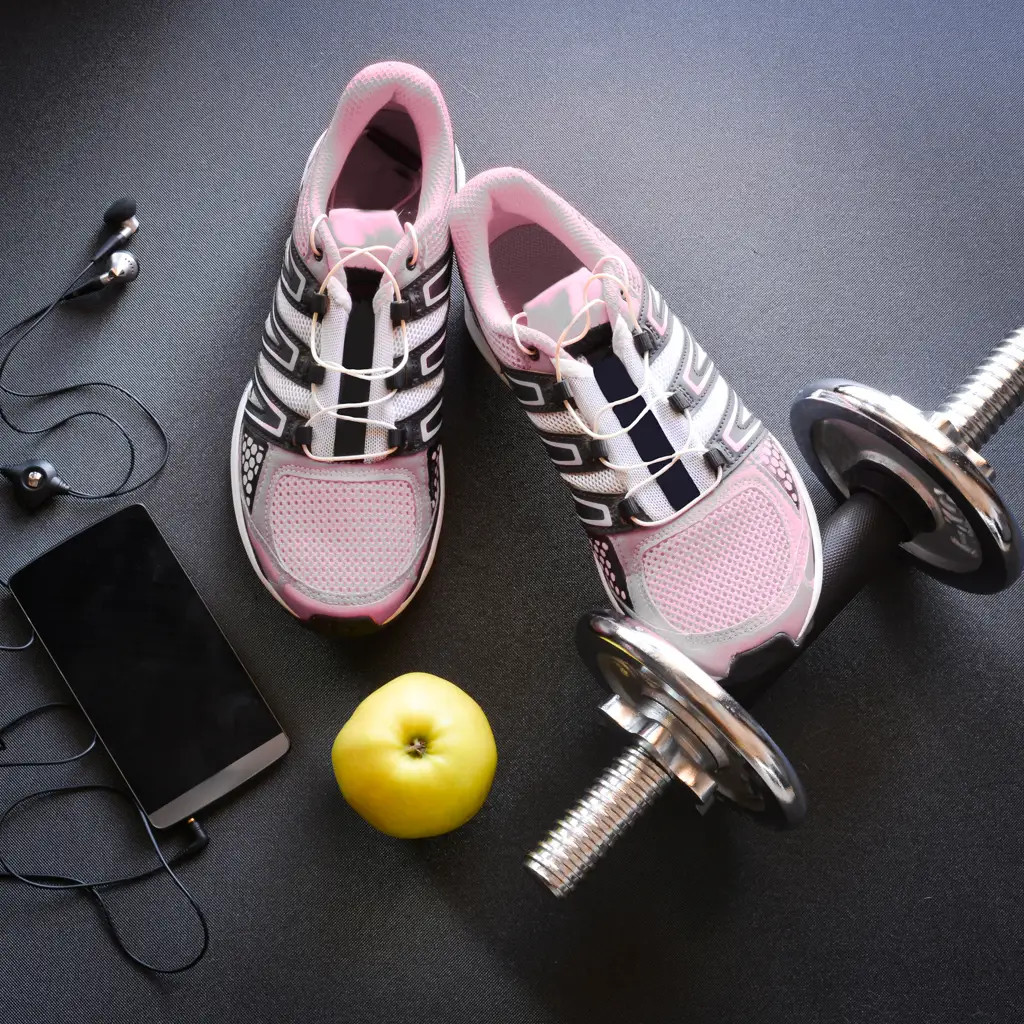First and foremost, it is important to remember that nothing should replace personalized medical advice. Before considering any physical activity, please discuss it with your oncologist. Prostate cancer, being the most commonly diagnosed cancer in men worldwide, this article has the sole ambition of sharing my personal point of view following the Prostate Cancer of a member of my family while summarizing my scientific readings on the subject. This article intends to share information regarding the benefits of Fitness (low to moderate intensity) during certain treatments for prostate cancer (particularly when they are diagnosed in the early stages of development).
The moment when doctors suspect possible prostate cancer but request additional medical tests
This pre-diagnosis phase of prostate cancer is absolutely key for the future and yet it is often ignored by most doctors and rarely mentioned in various scientific research.
However, this phase can be difficult to live with mentally while being quite long. Indeed, sometimes it is necessary to carry out several scientific examinations (rectal exam, biopsy, medical imaging, etc.) which can take a long time, especially in regions that are a little medically isolated or in countries where the infrastructure to fight against cancer are not well developed (and yes, this article is translated into several languages and referenced in several developing countries).
In addition, some people also want to have several medical opinions before committing to any treatment for prostate cancer.
In any case, it is quite undeniable that this period of doubt and hope constitutes a pivotal period for any person (including family and loved ones) particularly on a psychological level.
It is clear that even in the most developed countries, medical and psychological support is particularly lacking at this crucial moment.
This period often corresponds to the first psychological confrontation of a person (and their loved ones) with this potential illness. It is quite chronic that it preconditions the mental apprehension of the illness and the treatments.

The benefits of fitness during this pre-diagnosis phase of prostate cancer
Often left in the dark for several weeks (or even several months in certain countries), people awaiting a definitive medical diagnosis of prostate cancer have, in my opinion, everything to gain from practicing fitness (at low to moderate intensity).
Indeed, Fitness is a physical activity that benefits from easy access in all countries.
In the most developed countries, it is common to be able to find either a fitness room nearby, or an outdoor park with some street workout facilities, or to be able to have a few dumbbells and other equipment delivered quickly.
In developing countries, Fitness offers the advantage of being a physical activity which can also be practiced with body weight (at home or outdoors) and therefore does not require any specific equipment.
In addition, the other major advantage of Fitness compared to other sporting activities is that it is an individual sport which does not require a minimum number of people. However, it is possible to train with friends or create a small group to motivate yourself.
Fitness also has the advantage of being totally flexible, whether in terms of schedule (during the day, lunch break, evening, etc.) but also in the intensity of its practice. Indeed, it is possible to easily adapt the weight, the duration, the number of repetitions to perform and the number of exercises to do.
Other benefits of Fitness during the pre-diagnosis phase and in the longer term

Fitness also offers the benefit of raising awareness about daily nutritional balance.
Practicing this sport allows you to pay particular attention to the nutritional balance of meals by promoting a “health-friendly” diet.
In essence, a healthy practice of Fitness encourages reasonable consumption of fruits, vegetables, carbohydrates, white meats and fish.
Fitness also encourages the reduction of the consumption of saturated fats, red meats as well as the consumption of sweets (and other sugars).
This sport also helps encourage stopping the consumption of cigarettes, alcohol and even drugs. Scientific research is unanimous on the absolute need to stop the consumption of these elements (cigarettes, alcohol, drugs) as quickly as possible in the context of prostate cancer.
Finally, the “healthy” practice of Fitness allows you to learn how to decipher the labels (proteins, carbohydrates, lipids, vitamins, fibers, etc.) of foods available in supermarkets.
Fitness as a psychological anchor in the face of illness
The big problem with the pre-diagnostic phase of prostate cancer is that this phase of uncertainty is totally psychologically destructive for patients and their families.
Indeed, it is necessary to remember that the word “Cancer” is the most feared word in most languages (RJ Donovan, 2003). Once pronounced, it becomes the main focus of concern for the person concerned and their family. This distortion quickly becomes totally destructive for the morale and daily life of the patient and his family. However, this anchor point will condition the entire continuation of the relationship with the illness.
In this phase of uncertainty, it seems very interesting to be able to propose a psychological anchor point based on a sporting practice (it is not really necessary to detail the popularity and the values conveyed by the sporting practice throughout the world) which can follow the patient over the long term in the face of the disease while offering the advantage of being flexible and modular.

The conditions to respect for a healthy fitness practice during the pre-diagnosis phase of Prostate Cancer
At any time during your fitness practice in the pre-diagnosis phase of Prostate Cancer, you will need to be attentive to simple general signs, indicators of a poor match of the workload to the general state of the moment.
Thus, a general state of fatigue persisting during the day, intense muscle pain upon waking up, persisting over the days, postprandial drowsiness, difficulty falling asleep, sleep described as poor quality are warning signs of poor tolerance (or poor progressivity) of your Fitness training which requires a temporary reduction in your training program.
On the other hand, if you were previously very active (with many sporting activities) you must be careful not to fall into excess and unnecessarily exhaust your body.
The benefits of fitness practice during the pre-diagnosis phase of Prostate Cancer
The objective of adopting a Fitness activity in the pre-diagnosis phase of Prostate Cancer is to adopt an active lifestyle in the long term.
This is based primarily on changes in sustainable lifestyle behavior (nutrition, physical activity, recovery, sleep, etc.) which will be able to support the patient in the long term to cope with the disease.
This also aims to provide a psychological anchor point outside of prostate cancer and the imagination that this disease conveys.
Good fitness practice is based on the combination of endurance activities (aimed at developing cardiorespiratory capacities) and muscle strengthening.
Regular and appropriate fitness practice will:
- reduce daily idle time
- improvement of cardio-respiratory capacity
- preserve the patient’s muscle mass (which will be critical in the long term, particularly during post-treatment recovery phases)
- reduce fat mass gain (which is known to be harmful in the context of Prostate Cancer)
- preserve joint mobility, spatial balance, proprioception and general autonomy of the person
- muscle strengthening of all muscle groups of the lower limbs, upper muscle groups and the lumbar spine
The conditions to respect for a healthy practice of fitness at all times and particularly in the face of Prostate Cancer
Even if this seems completely logical, it should be remembered that you should never consume steroids or doping products at any time and especially when you are facing (potential or proven) prostate cancer.
Indeed, schematically speaking, Prostate Cancer cells feed mainly on energy (sugar and fat) and male hormones (testosterone and testosterone derivatives) to develop.
Consequently, any consumption of anabolic steroids (outside a strict medical framework in which an oncologist has given explicit consent) constitutes an accelerating factor in the development of prostate cancer. It’s like you want to stop your prostate cancer from progressing but you continue to provide it with fuel to make it grow even faster.
Treatment strategies for prostate cancer using hormonal therapies are in fact intended to cut off the secretion of testosterone in patients in order to reduce tumors and the number of cancer cells circulating in the body (for new generation hormonal therapies, they are As for them, they focus on cutting off androgen receptors, that is to say on cutting off the receptors of the body’s cells for testosterone and its derivatives).
Therefore, it is easy to understand how absolutely essential it is to avoid at all costs consuming anabolic steroids and all other doping products that generally circulate in fitness centers.

General contraindications to the practice of Fitness in case of Prostate Cancer
At this stage, it is necessary to remember again that the practice of Fitness requires prior approval from your doctor. This medical opinion is essential because it takes into account your state of health and your medical history.
Consequently, the list of contraindications below is not exhaustive and is not individualized either:
- extreme fatigue
- symptomatic anemia (hemoglobin ≤ 8 g/dl)
- early consequences of surgery (risk of scar dehiscence, hemorrhage)
- severe infectious syndrome currently evolving
- decompensation of cardiopulmonary pathology
- lytic bone lesions of the spine or long bones (the contraindication
concerns the mobilization of the affected limb) - severe malnutrition
- severe dehydration
- cardiopulmonary comorbidities

Follow me on Instagram



